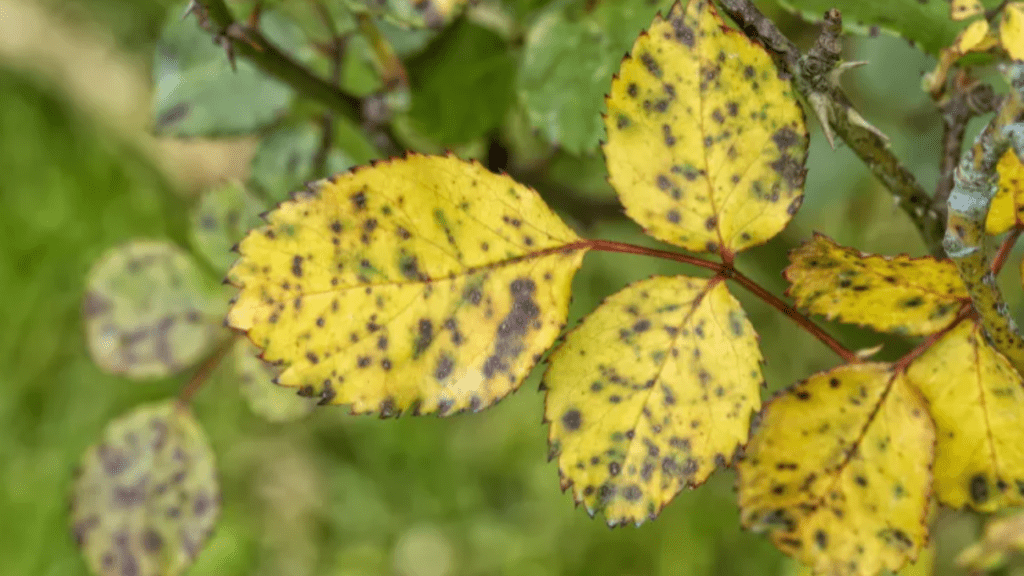
Rose Leaves Turning Yellow: Causes and Solutions for Healthy Plants
If you’ve noticed your rose leaves turning yellow, don’t panic just yet. There are several common causes for this issue, and thankfully, there are also effective solutions to help your plants regain their health and vibrancy. In this post, we’ll explore the various reasons why rose leaves turning yellow, from nutrient deficiencies to pest infestations, and provide you with practical solutions to address each issue. By the end of this post, you’ll have the knowledge and tools to keep your rose plants thriving and beautiful.
Roses are a beloved and popular plant, but they can be prone to a variety of issues, including yellowing leaves. It’s important to address this issue in order to maintain healthy rose plants. One common cause of yellowing leaves is a lack of essential nutrients, such as nitrogen, iron, or magnesium. In this case, using a balanced fertilizer and ensuring proper watering can help to replenish the missing nutrients. Another common culprit for yellowing leaves is pest infestations, such as aphids or spider mites. In this case, using organic pest control methods or insecticidal soap can help to eliminate the pests and prevent further damage to the plants. Additionally, environmental factors such as excessive heat or overwatering can also cause rose leaves turning yellow. By addressing these issues and providing the necessary care, you can help your rose plants to maintain their health and beauty.
Table of Contents
ToggleUnderstanding the Problem
What Does Yellowing of Rose Leaves Indicate?
Yellowing of rose leaves can indicate a few different issues that need to be addressed in order to maintain healthy rose plants. One common cause of yellowing leaves is a lack of essential nutrients, such as nitrogen, iron, or magnesium. In this case, using a balanced fertilizer and ensuring proper watering can help to replenish the missing nutrients and restore the health of the plants. Another common culprit for yellowing leaves is pest infestations, such as aphids or spider mites. In this case, using organic pest control methods or insecticidal soap can help to eliminate the pests and prevent further damage to the plants. Additionally, environmental factors such as excessive heat or overwatering can also cause rose leaves turning yellow. By understanding the potential causes of yellowing leaves and taking the necessary steps to address them, you can help your rose plants to maintain their health and beauty.
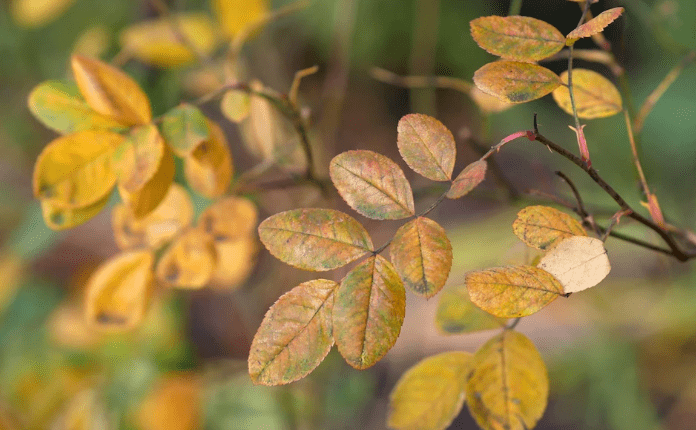
Explanation of chlorosis and its impact on plant health.
Chlorosis is a condition in plants where the leaves turn yellow due to a lack of chlorophyll, the green pigment that is essential for photosynthesis. This can impact the health of the plant by reducing its ability to produce energy and nutrients. The most common cause of chlorosis is a deficiency in essential nutrients such as nitrogen, iron, or magnesium. When plants lack these nutrients, their leaves can turn yellow and they may exhibit stunted growth. To address chlorosis, it is important to identify the specific nutrient deficiency and provide the plant with the necessary nutrients through fertilization. Additionally, environmental factors such as poor soil drainage, compacted soil, or high pH levels can also contribute to chlorosis. It is important to address these environmental factors to improve the overall health of the plant. By understanding the impact of chlorosis on plant health and addressing the underlying causes, you can help your plants to maintain their vitality and ensure their long-term growth and success.
Importance of early detection and intervention.
Early detection and intervention are crucial when it comes to the health of plants. One common issue that can impact plant health is chlorosis, which is the yellowing of leaves due to a deficiency in essential nutrients such as nitrogen, iron, or magnesium. When plants lack these nutrients, they may exhibit stunted growth and reduced ability to produce energy and nutrients. It’s important to address chlorosis by identifying the specific nutrient deficiency and providing the plant with the necessary nutrients through fertilization. Additionally, environmental factors such as poor soil drainage, compacted soil, or high pH levels can also contribute to chlorosis. By addressing these environmental factors and providing the necessary nutrients, you can help your plants maintain their vitality and ensure their long-term growth and success. Early detection and intervention can make a significant impact on the overall health of the plant.
Common Causes of Rose Leaves Turning Yellow
Watering Issues
One common issue that can cause rose leaves to turn yellow is watering problems. Overwatering or underwatering your roses can lead to stress and damage to the plant. When roses are overwatered, the roots can become waterlogged and suffocate, leading to yellowing leaves. On the other hand, underwatering can cause the plant to become dehydrated and also result in yellowing leaves. It’s important to maintain a consistent watering schedule and ensure that the soil is well-drained to prevent water-related issues. Additionally, using a soaker hose or drip irrigation system can help deliver water directly to the roots and prevent water from accumulating on the leaves, reducing the risk of yellowing. Proper watering practices are essential for the overall health and vitality of your rose plants.
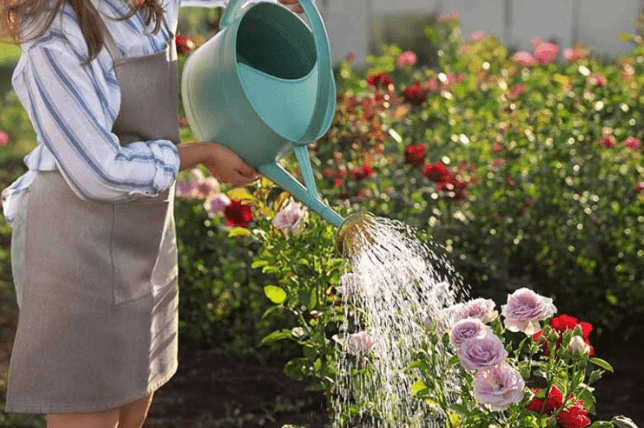
Nutrient Deficiencies
are another common cause of rose leaves turning yellow. When roses lack essential nutrients such as nitrogen, iron, or potassium, their leaves can start to yellow and wilt. This can be attributed to poor soil quality or improper fertilization. To address this issue, you can use a balanced fertilizer specifically designed for roses to provide the necessary nutrients for healthy growth. Additionally, consider conducting a soil test to determine any deficiencies and adjust your fertilization routine accordingly.
Pest and Disease Problems
Pest infestations and diseases can also contribute to yellowing leaves on rose plants. Common pests such as aphids, spider mites, and rose slugs can damage the leaves and cause them to turn yellow. In addition, diseases such as black spot and powdery mildew can affect the foliage, leading to discoloration and deterioration. It’s important to regularly inspect your rose plants for signs of pest and disease issues and take appropriate measures to control and prevent them. This may involve using insecticidal soaps or horticultural oils for pest control, as well as practicing good sanitation and proper pruning to minimize disease spread.
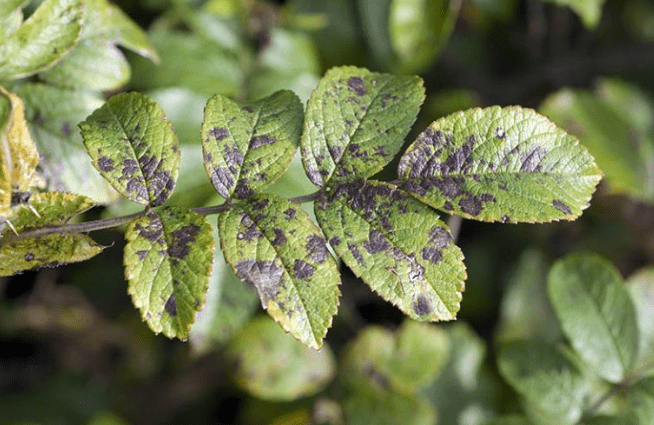
Environmental Factors
Can also play a role in causing yellowing leaves on rose plants. Factors such as excessive heat, drought, or waterlogged soil can stress the plants and lead to leaf discoloration. To address this issue, make sure your roses are planted in well-draining soil and water them deeply and infrequently to promote healthy root growth. Mulching around the base of the plants can also help regulate soil temperature and moisture levels. Additionally, providing adequate sunlight and air circulation can help minimize environmental stress on the plants. By addressing these environmental factors, you can help your rose plants maintain vibrant, healthy foliage.
Diagnosing the Cause
Step-by-Step Diagnostic Process
When dealing with yellowing leaves on rose plants, it’s important to follow a step-by-step diagnostic process. First, consider potential pest and disease issues. This may involve using insecticidal soaps or horticultural oils for pest control, as well as practicing good sanitation and proper pruning to minimize disease spread.
Environmental factors can also play a role in causing yellowing leaves on rose plants. Factors such as excessive heat, drought, or waterlogged soil can stress the plants and lead to leaf discoloration. To address this issue, make sure your roses are planted in well-draining soil and water them deeply and infrequently to promote healthy root growth. Mulching around the base of the plants can also help regulate soil temperature and moisture levels. Additionally, providing adequate sunlight and air circulation can help minimize environmental stress on the plants.
By following this step-by-step diagnostic process and addressing potential pest, disease, and environmental issues, you can help your rose plants maintain vibrant, healthy foliage.
Tools and Techniques for Accurate Diagnosis
When diagnosing issues with your plants, it’s important to use the right tools and techniques to accurately identify the problem. This may involve examining the leaves, stems, and overall appearance of the plant to look for signs of pests, diseases, or environmental stressors. You can use a magnifying glass to closely inspect the plant for any signs of insect infestations or disease symptoms. It’s also helpful to take note of any changes in the plant’s growing conditions, such as changes in watering, sunlight, or temperature. Additionally, you can use diagnostic tools such as soil testing kits to check for nutrient deficiencies or pH imbalances that could be affecting the plant’s health. By using these tools and techniques, you can pinpoint the cause of the issue and take appropriate action to address it, ultimately helping your plants thrive.
Solutions and Preventative Measures
Adjusting Watering Practices
When it comes to diagnosing issues with your rose plants, it’s important to use the right tools and techniques to accurately identify the problem. This may involve examining the leaves, stems, and overall appearance of the plant to look for signs of pests, diseases, or environmental stressors. You can use a magnifying glass to closely inspect the plant for any signs of insect infestations or disease symptoms. It’s also helpful to take note of any changes in the plant’s growing conditions, such as changes in watering, sunlight, or temperature. Additionally, you can use diagnostic tools such as soil testing kits to check for nutrient deficiencies or pH imbalances that could be affecting the plant’s health. By using these tools and techniques, you can pinpoint the cause of the issue and take appropriate action to address it, ultimately helping your plants thrive.
In terms of adjusting watering practices, it’s important to ensure that your rose plants are receiving the right amount of water. Overwatering can lead to root rot and other issues, while underwatering can cause stress and wilting. It’s important to water your plants deeply and infrequently, allowing the soil to dry out slightly between waterings. You can also consider using a drip irrigation system to provide consistent, efficient watering. By adjusting your watering practices to meet the specific needs of your rose plants, you can help them maintain vibrant, healthy foliage and thrive in their environment.
Enhancing Nutrient Supply
Is crucial for the health and growth of your plants. One way to do this is by incorporating organic matter into the soil, such as compost or aged manure, to provide essential nutrients and improve soil structure. Another method is to use fertilizers specifically formulated for roses, which provide the necessary nutrients for healthy growth. Additionally, you can use diagnostic tools such as soil testing kits to check for nutrient deficiencies or pH imbalances that could be affecting the plant’s health. By using these tools and techniques, you can pinpoint the cause of the issue and take appropriate action to address it, ultimately helping your plants thrive. In terms of adjusting watering practices, it’s important to ensure that your rose plants are receiving the right amount of water. Overwatering can lead to root rot and other issues, while underwatering can cause stress and wilting. It’s important to water your plants deeply and infrequently, allowing the soil to dry out slightly between waterings. You can also consider using a drip irrigation system to provide consistent, efficient watering. By adjusting your watering practices to meet the specific needs of your rose plants, you can help them maintain vibrant, healthy foliage and thrive in their environment.
Pest and Disease Management
Pest and Disease Management are crucial aspects of plant care and maintenance. To effectively manage pests and diseases, it’s important to start by identifying the specific issues affecting your plants. Look for signs of damage, discoloration, or unusual growth patterns, and research common pests and diseases that may be causing these symptoms. Once you have identified the issue, you can take appropriate action to address it. This may involve using natural pest control methods such as introducing beneficial insects or using organic insecticidal soaps and oils. You can also use physical barriers such as row covers to protect your plants from pests. Additionally, you can use diagnostic tools such as soil testing kits to check for nutrient deficiencies or pH imbalances that could be affecting the plant’s health. By using these tools and techniques, you can pinpoint the cause of the issue and take appropriate action to address it, ultimately helping your plants thrive. In terms of adjusting watering practices, it’s important to ensure that your rose plants are receiving the right amount of water. Overwatering can lead to root rot and other issues, while underwatering can cause stress and wilting. It’s important to water your plants deeply and infrequently, allowing the soil to dry out slightly between waterings. You can also consider using a drip irrigation system to provide consistent, efficient watering. By adjusting your watering practices to meet the specific needs of your rose plants, you can help them maintain vibrant, healthy foliage and thrive in their environment.
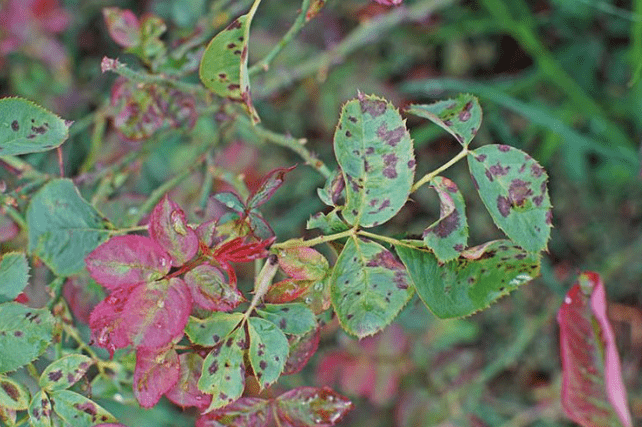
Optimizing Environmental Conditions
Optimizing Environmental Conditions is essential for the health and growth of your plants. To ensure that your plants are thriving, it’s important to assess the environmental factors that may be affecting their growth. This includes factors such as sunlight, water, temperature, and soil quality. By optimizing these conditions, you can create a healthy and supportive environment for your plants to thrive. One way to optimize environmental conditions is to ensure that your plants are getting the right amount of sunlight. Different plants have different sunlight needs, so it’s important to research the specific requirements of your plants and place them in an area where they can receive the appropriate amount of sunlight. Additionally, you can use diagnostic tools such as soil testing kits to check for nutrient deficiencies or pH imbalances that could be affecting the plant’s health. By using these tools and techniques, you can pinpoint the cause of the issue and take appropriate action to address it, ultimately helping your plants thrive. In terms of adjusting watering practices, it’s important to ensure that your plants are receiving the right amount of water. Overwatering can lead to root rot and other issues, while underwatering can cause stress and wilting. It’s important to water your plants deeply and infrequently, allowing the soil to dry out slightly between waterings. You can also consider using a drip irrigation system to provide consistent, efficient watering. By adjusting your watering practices to meet the specific needs of your plants, you can help them maintain vibrant, healthy foliage and thrive in their environment. Overall, optimizing environmental conditions is crucial for the health and growth of your plants, and taking the time to assess and adjust these factors can lead to thriving, beautiful plant life.
Long-Term Care and Maintenance
Regular Monitoring and Maintenance
Is essential for the health and growth of your plants. By regularly monitoring the condition of your plants, you can identify any issues or signs of distress early on and take appropriate action to address them. This can include checking for pests, diseases, or nutrient deficiencies, as well as evaluating the overall health and appearance of your plants. By using these tools and techniques, you can pinpoint the cause of the issue and take appropriate action to address it, ultimately helping your plants thrive.
In terms of adjusting watering practices, it’s important to ensure that your plants are receiving the right amount of water. Overwatering can lead to root rot and other issues, while underwatering can cause stress and wilting. It’s important to water your plants deeply and infrequently, allowing the soil to dry out slightly between waterings. You can also consider using a drip irrigation system to provide consistent, efficient watering. By adjusting your watering practices to meet the specific needs of your plants, you can help them maintain vibrant, healthy foliage and thrive in their environment.
Overall, optimizing environmental conditions is crucial for the health and growth of your plants, and taking the time to assess and adjust these factors can lead to thriving, beautiful plant life. Regular maintenance and monitoring are the key to ensuring that your plants continue to grow and flourish in the long term.
Pruning and Training
Are important for maintaining the health and shape of your plants. Pruning involves removing dead or overgrown branches to promote new growth and improve the overall appearance of the plant. It also helps to prevent disease and pest infestations. Training, on the other hand, involves guiding the growth of the plant to create a desired shape or structure. This can be done through the use of stakes, trellises, or other support systems. Both pruning and training are essential for promoting healthy growth and enhancing the aesthetic appeal of your plants. By taking the time to prune and train your plants, you can encourage strong, balanced growth and create a beautiful, well-maintained garden or landscape. Remember to use the proper tools and techniques for pruning and training to ensure the best results for your plants.
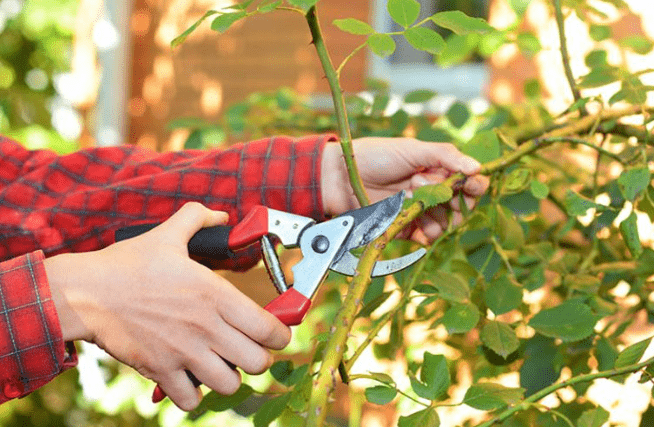
Soil Health Management
Is essential for maintaining the fertility and productivity of your soil. By implementing practices such as crop rotation, cover cropping, and minimal tillage, you can improve soil structure, enhance nutrient cycling, and promote beneficial soil microbial activity. These practices can also help to reduce erosion, conserve water, and mitigate the impact of climate change. Additionally, adding organic matter to the soil through the use of compost and organic fertilizers can further enrich the soil and support healthy plant growth. By prioritizing soil health management, you can create a sustainable and resilient agricultural system that benefits both the environment and your crop production. It’s important to carefully monitor the condition of your soil and make adjustments as needed to ensure its long-term health and productivity.
In conclusion, yellowing rose leaves can be a sign of various issues such as nutrient deficiencies, disease, or pests. It’s important to properly diagnose the problem before implementing a solution. By addressing the root cause and providing the necessary care, you can ensure that your rose plants stay healthy and vibrant. Remember to regularly inspect your plants and provide them with the proper nutrients and care to prevent any issues from arising.
Frequently asked questions And Answer
There are several reasons why rose leaves may turn yellow, including overwatering, nutrient deficiencies, pest infestations, or fungal diseases.
To prevent yellowing of rose leaves, make sure to water your plants properly, provide them with adequate nutrients through fertilization, and regularly inspect for pests and diseases.
Depending on the cause of the yellowing, treatments may include adjusting watering practices, providing the necessary nutrients, using insecticidal soap for pests, and applying fungicides for fungal diseases.
Yes, environmental factors such as extreme heat, cold, or humidity can also contribute to yellowing of rose leaves. It’s important to monitor and control these factors as much as possible.
It is recommended to fertilize rose plants every 4-6 weeks during the growing season, typically from early spring to late summer. Use a balanced fertilizer specifically formulated for roses.
Yes, some natural remedies include using neem oil for pest control, compost tea for providing nutrients, and spraying a mixture of baking soda and water for fungal diseases.
Yes, it is important to prune yellow leaves from rose plants to prevent the spread of diseases and to encourage new growth. Be sure to sanitize your pruning tools between cuts to avoid spreading any potential infections.
In addition to addressing yellowing leaves, ensure your rose plants receive adequate sunlight, proper air circulation, and regular maintenance such as deadheading spent blooms and removing any debris from around the plants.
